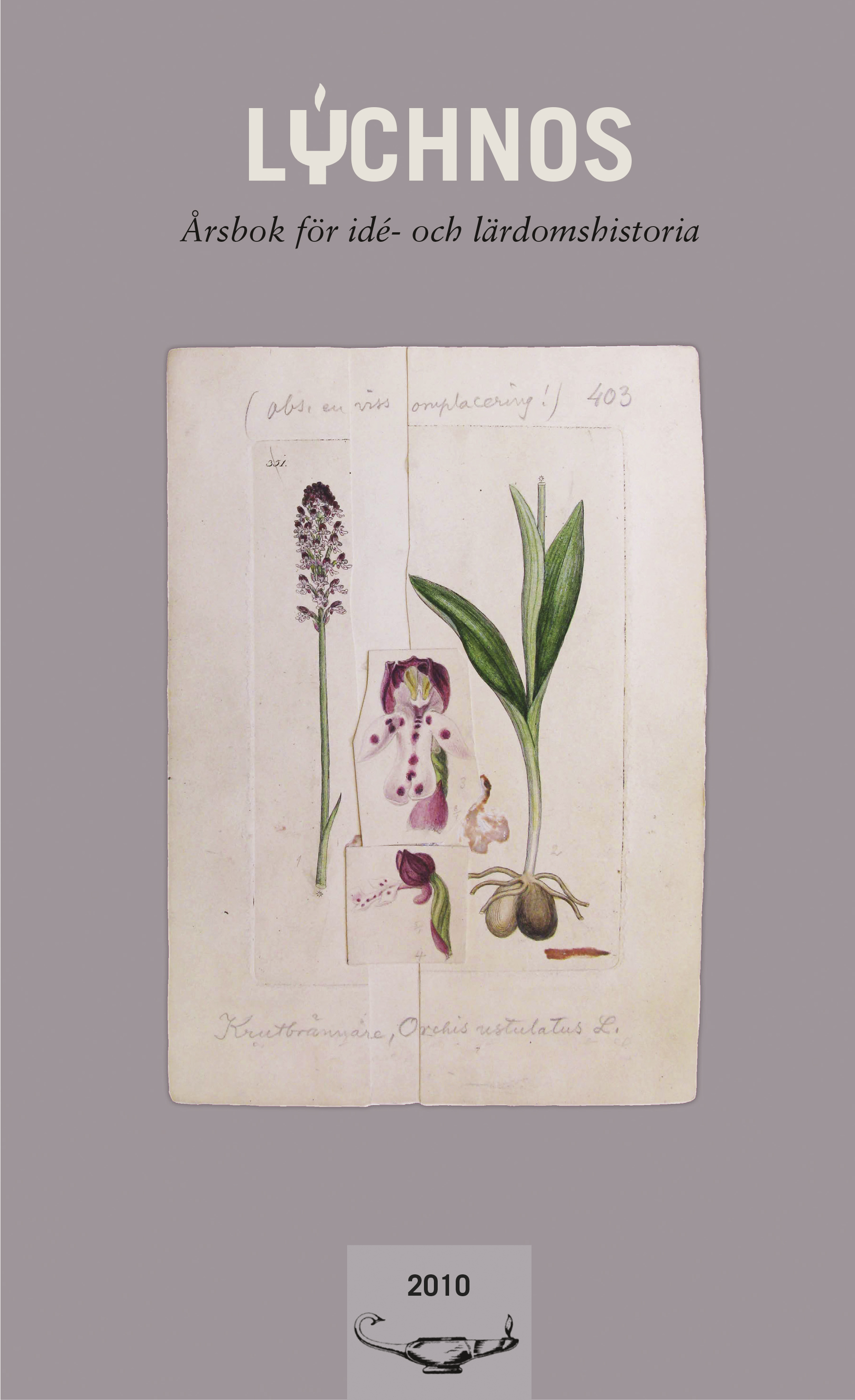Bokband, materiell kultur och samhällsstruktur
Om det moderna förlagsbandets framväxt, form och betydelse
Abstract
This article explores the development of modern publishers’ binding and its historical context with special regard to Swedish clothbindings. Early clothbindings often lacked decoration or were blind blocked. Typically, the name of the author and the title were placed on the spine, often together with some kind of ornament. Even when decorated with ornaments and pictures, during the 1840’s and 50’s the upper cover (or ”front cover”) was normally left without title information. This was in line with a long tradition of binding design in which this kind of information was in principle never displayed on the upper cover. An important change came about in the 1860’s when it suddenly became common practice to place the title and/ or the author’s name on the upper cover as well as on the spine. This became the prevailing practice on publishers’ cloth from the 1870’s onwards.
The reason for this radical shift in the history of bookbindings is to be found within the complex changes that occurred in society. The introduction of title and author’s name on the upper cover should be seen in the light of the general development from craft society (with private bindings) to industrial- and consumer society (with publishers’ bindings), whereof the significance of individualism and a unique identity increased at the same rate as the mass production of identical objects. Prior to the break-through of publishers’ bindings, information about title and author were commonly found on the title page. Bindings were normally commissioned by the individual book buyer and were not designed to market the book, since it had already been purchased. Texts that were sometimes to be found on the upper cover of private bindings and trade bindings rather functioned as a confirmation of the predominant order. Exclusive private bindings and trade bindings, including the owners name and arms, confirmed the social position of their owner in the same way that magnificently finished church bibles confirmed the status of the church and religion. The shift from mono-ontology to the more pluralistic order of modernity is here discussed in the light of Charles Taylor’s and Anthony Giddens’ views on modernity.
As publishers began to have their editions bound in a manner that presented the individual buyer with a ready-bound book, information concerning title and author were now moved to the exterior part of the product, the binding. Since aesthetics and the form and style of goods proved to be of economic importance, more and more covers were furnished with pictures and other elements of decoration. It became strategically correct to let the upper cover, which had become so essential for the attraction of the book, convey the practical and distinctive information regarding the title and the author of the work.
Downloads
Publicerad
Nummer
Sektion
Licens
This work is licensed under a Creative Commons Attribution 4.0 International License. The copyright for the work published in Lychnos remains with the authors.


